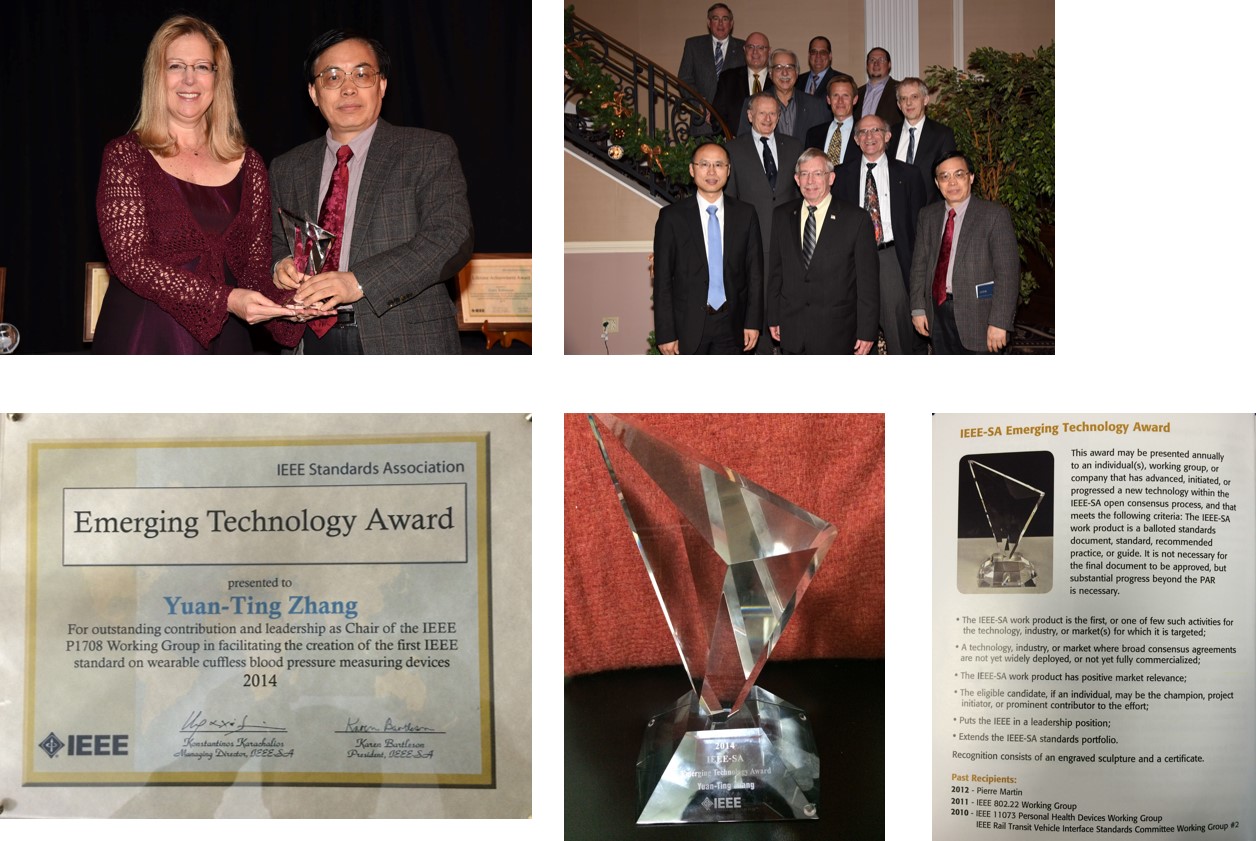Homepage
2018
Prof. Xu Jian-Bin is awarded the Research Excellence Award 2014-15 by The Chinese University of Hong Kong. In granting this Award, the University recognizes his remarkable accomplishment in research. The Award consists of an amount of HK$200,000 in the form of a research grant.
The Research Excellence Award is established by the Research Committee of the University with an aim to foster a long term and overall positive effect in encouraging research at the University which would eventually aggrandize the success rate of all research grant applications.
Congratulations!
Prof. Sun Xiankai, Assistant Professor, Department of Electronic Engineering received the Early Career Award by Research Grants Council (RGC) in recognition of his excellent research performance.
Applications for research project grants under the Early Career Scheme are assessed independently by international experts, with applicants required to be full-time academic staff members within the first three years of employment at a University Grants Committee (UGC) funded institution. Of the 151 funded projects, only 9 early-career scholars received Early Career Awards due to their “excellent” ratings with a full score of 5.0. Prof. Sun scored a top rating with his funded project “Investigation of the force law of classical electrodynamics with nanoscale optomechanical systems”.
The Early Career Scheme aims to nurture the development of promising research talents by supporting the research projects of junior scholars at the beginning of their academic career. Each year the RGC would select up to 5% of the top junior scholars to receive the honorary title of Early Career Award. In addition to the funding of research for undertaking independent research work, an honorary title will be awarded plus an additional amount of $100,000 per project will be provided to those awardees who have submitted a satisfactory Education Plan for undertaking educational activities.
Prof. ZHANG Yuanting received 2014 IEEE-SA Emerging Technology Award in last December. This award is presented to Prof. ZHANG for his outstanding contribution and leadership as Chair of the IEEE P1708 Working Group in facilitating the creation of the first IEEE standard on wearable cuffless blood pressure measuring devices.
Congratulations!

The American Institute for Medical and Biological Engineering (AIMBE) has announced the pending induction of Arthur Fuk--‐Tat Mak, Ph.D., Professor, Programme Director and Division Head, Biomedical Engineering, The Chinese University of Hong Kong, to its College of Fellows. Dr. Mak was nominated, reviewed, and elected by peers and members of the College of Fellows for outstanding contributions to rehabilitation biomechanics and biomedical engineering education.
The College of Fellows is comprised of the top two percent of medical and biological engineers in the country. The most accomplished and distinguished engineering and medical school chairs, research directors, professors, innovators, and successful entrepreneurs, comprise the College of Fellows.
AIMBE Fellows are regularly recognized for their contributions in teaching, research, and innovation. AIMBE Fellows have been awarded the Presidential Medal of Science and the Presidential Medal of Technology and Innovation and many also are members of the National Academy of Engineering, Institute of Medicine, and the National Academy of Sciences.
A formal induction ceremony will be held during AIMBE’s 2015 Annual Meeting at the National Academy of Sciences Great Hall in Washington, DC on March 16, 2015. Dr. Mak will be inducted along with 150 colleagues who make up the AIMBE College of Fellows Class of 2015. For more information about the AIMBE Annual Meet, please visit www.aimbe.org.
AIMBE’s mission is to recognize excellence in, and advocate for, the fields of medical and biological engineering in order to advance society. Since 1991, AIMBE‘s College of Fellows has lead the way for technological growth and advancement in the fields of medical and biological engineering. Fellows have helped revolutionize medicine and related fields in order to enhance and extend the lives of people all over the world. They have also successfully advocated for public policies that have enabled researchers and business--‐makers to further the interests of engineers, teachers, scientists, clinical practitioners, and ultimately, patients.
Subcategories
Scholarship Received Article Count: 22
Professors and Research Staff Article Count: 132
Students Article Count: 159



